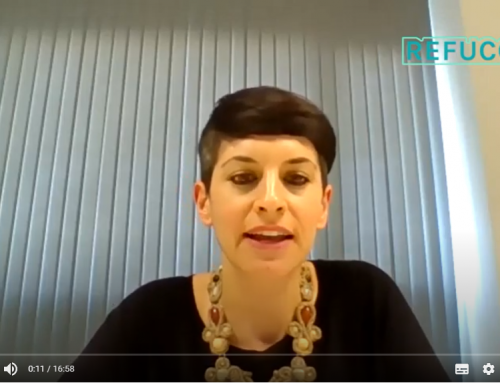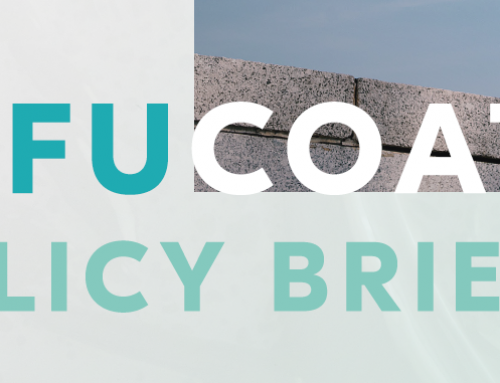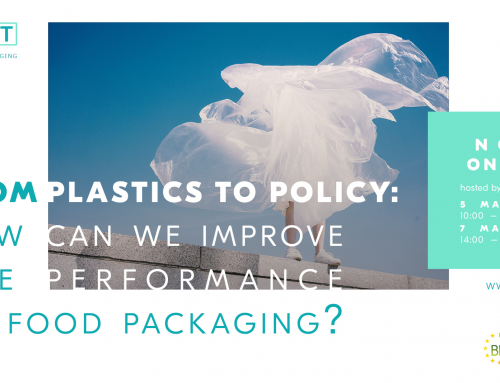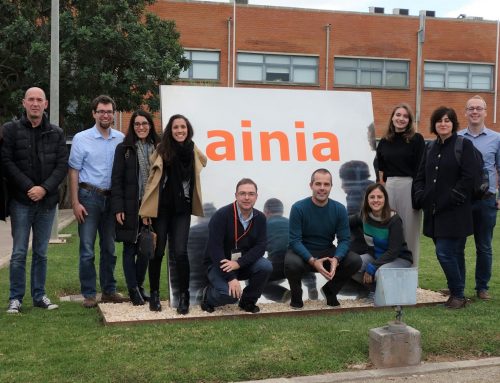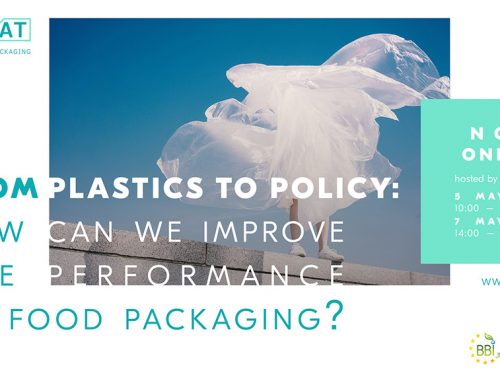#REFUCOAT coordinators talk about the project’s home stretch
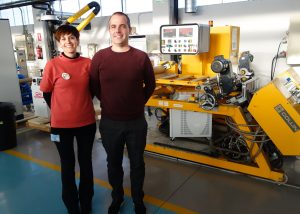
Q: You both work at AIMPLAS. What is your background?
LORENA RODRIGUEZ GARRIDO
(technical coordinator): I have a
degree in chemistry and 15-years’
experience in the packaging
industry. At AIMPLAS I’m involved
in the printing and coating
department – focussing on creating
sustainable coatings, producing
packaging structures and improving
barrier properties.
JAVIER MARZO MUÑOZ (project
manager): I’m a biologist and have
an environmental management
master with 10 years’ experience
in internalisation in the food
business. At AIMPLAS, I work as a
project manager in close contact
with the technical departments.
The REFUCOAT paradigm
Q: Your core business is plastic
production. What is important in
thinking about the sustainability
aspect?
LORENA: Considering the whole life
cycle assessment of the plastic
production process is essential. We
need to ask ourselves a) How much
energy is needed throughout the
development process? and b) How
much emission is release during the
recycling step? The REFUCOAT
paradigm arises due to a change
in regulation towards 2030
wherein all packaging needs to be recyclable, while at the same time
needs to have optimal barrier
properties.
Q: The packaging is bio-based. Will it be compostable, recyclable or biodegradable?
LORENA: The chicken tray and lid
made from PLA/PHA material with
active coating will be compostable.
The packaging for breadcrumbs
will also be compostable. Only, for
the packaging of crisps, made from
biopolyester and biopolyethylene
material, will be mechanically
recyclable. Both materials are
recyclable after separation.
Further research needs to clarify if
REFUCOAT´s project can also
develop a compostable structure
based on PHA and PLA.
Technical challenges
Q: What are the biggest challenges?
LORENA: The biggest challenge for
us is not only obtaining new
materials like PHA and PGA but
also being able to process them
using conventional equipment. The
processability of PGA material is
not easy, it is a new material which
shows very good barrier
properties, which makes it the
perfect biobased material for
barrier packaging structures.
Working with PGA requires a high
knowledge of its properties and
behaviour to overcome the
challenges the material faces to
become the perfect solution for
packaging structures. REFUCOATs
biggest challenge is developing
and understanding PGA material
for barrier packaging solutions.
“Packaging needs to be
recyclable, while at the
same time have optimal
barrier properties.”
Q: Do you get support or resistance
from the industry?
LORENA: The industry remark about
REFUCOAT is that the project is
rather complicated. But with a set
up that is looking for recyclable,
compostable multi-layered
material instead of mono-materials
this structural complexity is innate.
Multiple industrial organisations
have expressed their interest in the
REFUCOAT outcomes and results.
They are especially interested in
the development of the PGA
material for breadcrumbs and
chips and the PHA with improved
water vapour barrier for chicken
trays.
COVID-19 versus REFUCOAT
Q: What stage is the project currently
at?
LORENA: The project was planned to
finish in May 2020. Due to COVID-
19, some lab work is postponed,
and the project needs to be
extended to September 2020.
JAVIER: Our final conference “From
plastic to policy – How can we
improve the performance of food
packaging”? would have taken
place in Brussels, May 2020. The
event is replaced by a 2-session
interactive webinar with inspiring
keynote speakers Tristram Stuart,
author and food waste campaigner
and Dr Andrew Dent, Executive
Vice President, Material Research
at Material ConneXion.
New research opportunities
Q: How have you experienced the work
in REFUCOAT?
JAVIER: REFUCOAT thrives on good
interaction between its partners.
Therefore, we organise monthly
meetings and liaises with partners
regularly to optimise collaboration.
LORENA: REFUCOAT has been an
interesting experience. We have
learned from the positive outcomes
and even more from the processes
that weren’t planned initially.
While trying to solve the
challenges in the project we have
seen the complexity of developing
new material for industrial
processes and have obtained
valuable scientific information. This
exact complexity will open new
opportunities for research and
other EU project can be initiated as
a result of the outcomes.
Q: What is key to making the end
product a success?
JAVIER: The support of the BBI
network and the engagement and
maximal involvement of end-users
within the packaging industry.
More on REFUCOAT.eu

